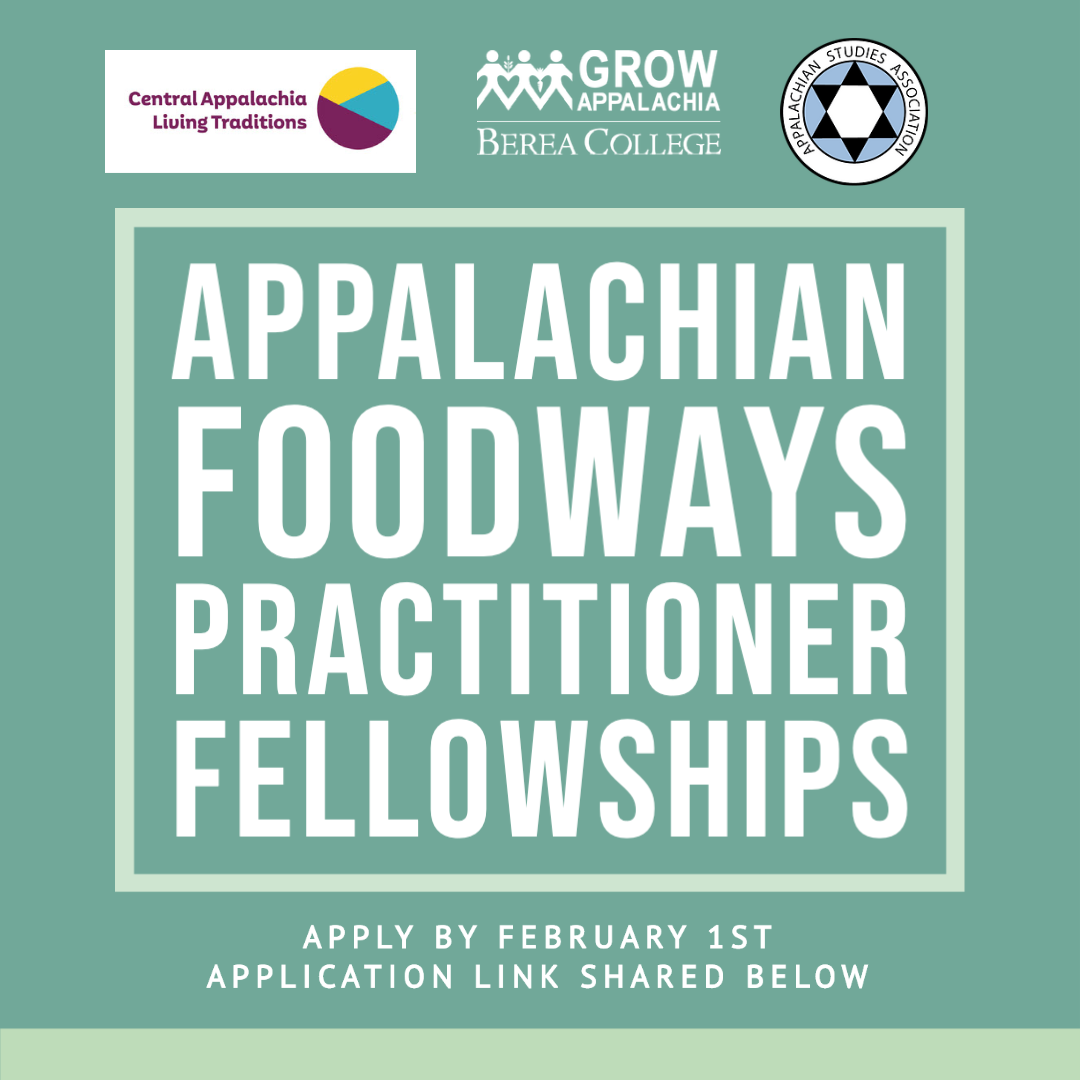by Mike Templeton
From the things urban Appalachians took with them to the factories like soup beans to people in Greater Cincinnati who are continuing Appalachian practices like food foraging, the Urban Appalachian Community Coalition has sought to show how foodways a central part of our experience. What we have learned is that there are many urban Appalachians in Greater Cincinnati who are practitioners of traditional Appalachian foodways. We are now excited to offer information on a magnificent opportunity for practitioners with the Appalachian Foodways Fellowship with Grow Appalachia. This opportunity is specifically for our readers living in Appalachian counties such as Clermont in southeastern Ohio counties, and others within Appalachian Regional Commission definition of Appalachia.
The Appalachian Foodways Fellowship will offer $4000 to foodways practitioners of all kinds within eligible counties. Candance Mullins, Executive Director of Grow Appalachia, explained that “while there are plenty of people in academia who are focused on Appalachian foodways, this fellowship is specifically meant for people who are not in academia but are practitioners of all sorts in the broadly defined areas of Appalachian foodways.” Mullins emphasized what is meant by broadly defined: “We are looking for farmers—even those who are new to farming, foragers, people who keep beans and seeds, chefs and cooks, medicinal herbalists, etc.” With so many people in Greater Cincinnati who have taken up these kinds of traditional practices, this is an outstanding opportunity for those in eligible counties to develop their work with some material assistance and recognition.
Grow Appalachia supports small farming initiatives and local food. They have been around since 2010 as a Strategic Initiative with Berea College. Mullins said that while they are a part of Berea College, their work really takes place in areas across central Appalachia with things like the Garden Grant Program. “We provide grants through the Garden Grant Program to local organizations who help people begin home and community gardens, farmers, and other community organizations to help people grow as much of their own food as possible, Mullins said. These kinds of programs often help people to put food on their tables with their own gardens. This is central to Grow Appalachia’s overall mission to help address food insecurity throughout central Appalachian through home and community garden initiatives, foodways, farming, and hunger relief programs.
The work of Grow Appalachia is primarily centered in the central Appalachian regions. Candance Mullins explained that they do a lot of work in areas of Eastern Kentucky, for example. Although the focus of Grow Appalachia involves educational programs on farming and community gardens, they also have a program for Community Kitchens as part of their emphasis in alleviating food scarcity. The Community Kitchens program utilizes community commercial kitchens so they can become what they describe as “multipliers for opportunity in sustainable food production” in the Appalachian regions where they work. This is just one example of the many programs at Grow Appalachia. A link to their website is provided below.
Candace Mullins told me, “This is the second year for the Appalachian Foodways Fellowship. It began with the Mid Atlantic Arts’ Central Appalachia Living Traditions program, and we are partnering with them this year.” Past winners of the fellowship include Yawah Awolowo who is a culinary artist, community activist, and owner of the Organic Roots Café. This is the only organic vegan and vegetarian café in the Knoxville Tennessee. She used the fellowship to fund what she calls her Functional Foods project to educate the “next generation in Appalachia on traditional foodways, nutrition, and ‘living cuisine.” We know from articles on this blog that there are foodways practitioners in our area who are engaged in similar projects.
Mullins explained that applications will be reviewed by a panel of people from all over the Appalachian region. The Berea College Crafts Program will present those awarded the fellowship at a special panel at the Appalachian Studies Conference this year. The fellowship will begin on March 1, 2023. Candace Mullins told me she is “thrilled to work with Grow Appalachia and be a part of these kinds of programs. I get to work with so many people and growers of all kinds.” In talking about this, Mullins also emphasized that Appalachia is an enormous area that offers a vast diversity of people. The Appalachian Foodways Fellowship is designed to represent all kinds of people as much as the diversity of practitioners of Appalachian Foodways.
The deadline for applications of the Appalachian Foodways Fellowship is February 1 of this year. A link to the fellowship information and application process is provided below. Grow Appalachia, in partnership with the Mid Atlantic Arts’ Central Appalachia Living Traditions program encourages Appalachian foodways practitioners of all kinds within the region to apply. Again, chefs, home cooks, people who a preserving things like canning and preserving foods, herbalists, and of course, farmers new and experienced are encouraged to apply. We know from past articles that Greater Cincinnati has a wealth of practitioners of Appalachian foodways. The Urban Appalachian community Coalition is proud to highlight the people who continue to practice these vital features of Appalachian cultural history.
The link for Grow Appalachian is here: https://growappalachia.berea.edu/.
Information on the Appalachian Foodways Fellowship and application information can be found at this link: https://growappalachia.berea.edu/appalachian-foodways-fellowship-program/
Mike Templeton is a writer, independent scholar, barista, cook, guitar player, and accidental jack-of-all-trades. He is the author of the forthcoming The Chief of Birds: A Memoir. Available later this year from Erratum Press, and Impossible to Believe, forthcoming from Iskra Books. Check out his profile in UACC’s new Cultural Directory. He lives in downtown Cincinnati with his wife who is a talented photographer. They spend their free time walking around the city snapping photos. She looks up at that the grandeur of the city, while Mike always seems to be staring at the ground.

